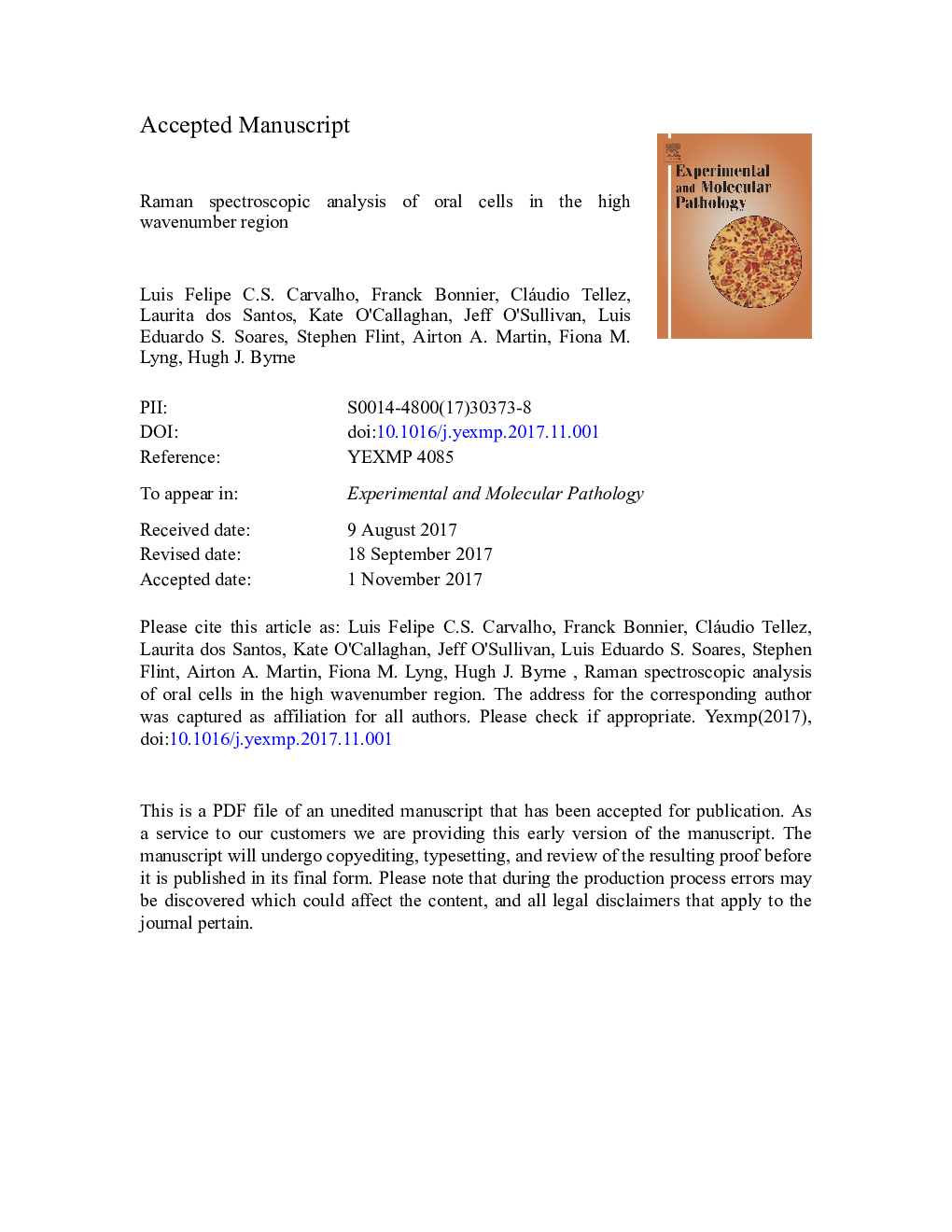| کد مقاله | کد نشریه | سال انتشار | مقاله انگلیسی | نسخه تمام متن |
|---|---|---|---|---|
| 8624216 | 1567914 | 2017 | 15 صفحه PDF | دانلود رایگان |
عنوان انگلیسی مقاله ISI
Raman spectroscopic analysis of oral cells in the high wavenumber region
دانلود مقاله + سفارش ترجمه
دانلود مقاله ISI انگلیسی
رایگان برای ایرانیان
کلمات کلیدی
موضوعات مرتبط
علوم زیستی و بیوفناوری
بیوشیمی، ژنتیک و زیست شناسی مولکولی
بیوشیمی بالینی
پیش نمایش صفحه اول مقاله

چکیده انگلیسی
Raman spectroscopy can provide a molecular-level signature of the biochemical composition and structure of cells with submicrometer spatial resolution and could be useful to monitor changes in composition for early stage and non-invasive cancer diagnosis, both ex-vivo and in vivo. In particular, the fingerprint spectral region (400-1800 cmâ 1) has been shown to be very promising for optical biopsy purposes. However, limitations for discrimination of dysplastic and inflammatory processes based on the fingerprint region have been demonstrated. In addition, the Raman spectral signal of dysplastic cells is one important source of misdiagnosis of normal versus pathological tissues. The high wavenumber region (2800-3600 cmâ 1) provides more specific information based on NH, OH and CH vibrations and can be used to identify the subtle changes which could be important for discrimination of samples. In this study, we demonstrate the potential of the high-wavenumber spectral region in this context by collecting Raman spectra of nucleolus, nucleus and cytoplasm from oral epithelial cancer (SCC-4) and dysplastic (DOK) cell lines and from normal oral epithelial primary cells, in vitro, in water immersion, which were then analyzed by principal components analysis as a method to discriminate the spectra. Analysis was performed before and after digital subtraction of the bulk water signal. In the normal cell line, the three subcellular regions are well differentiated before water subtraction, although the discrimination of the two nuclear regions is less well defined after water subtraction. Comparing the respective subcellular regions of the three cell lines, before water subtraction, the cell lines can be discriminated using sequential PCA and Feature Discriminant Analysis with up to ~ 100% sensitivity and 97% specificity for the cytoplasm, which is improved to 100% sensitivity and 99% specificity for the nucleus. The results are discussed in terms of discrimination comparing the CH vibrational modes of nucleic acids, proteins and lipids. The potential role of the OH vibrations, considering free water and confined water, in the discrimination of cell cultures and pathological processes are also discussed.
ناشر
Database: Elsevier - ScienceDirect (ساینس دایرکت)
Journal: Experimental and Molecular Pathology - Volume 103, Issue 3, December 2017, Pages 255-262
Journal: Experimental and Molecular Pathology - Volume 103, Issue 3, December 2017, Pages 255-262
نویسندگان
Luis Felipe C.S. Carvalho, Franck Bonnier, Cláudio Tellez, Laurita dos Santos, Kate O'Callaghan, Jeff O'Sullivan, Luis Eduardo S. Soares, Stephen Flint, Airton A. Martin, Fiona M. Lyng, Hugh J. Byrne,